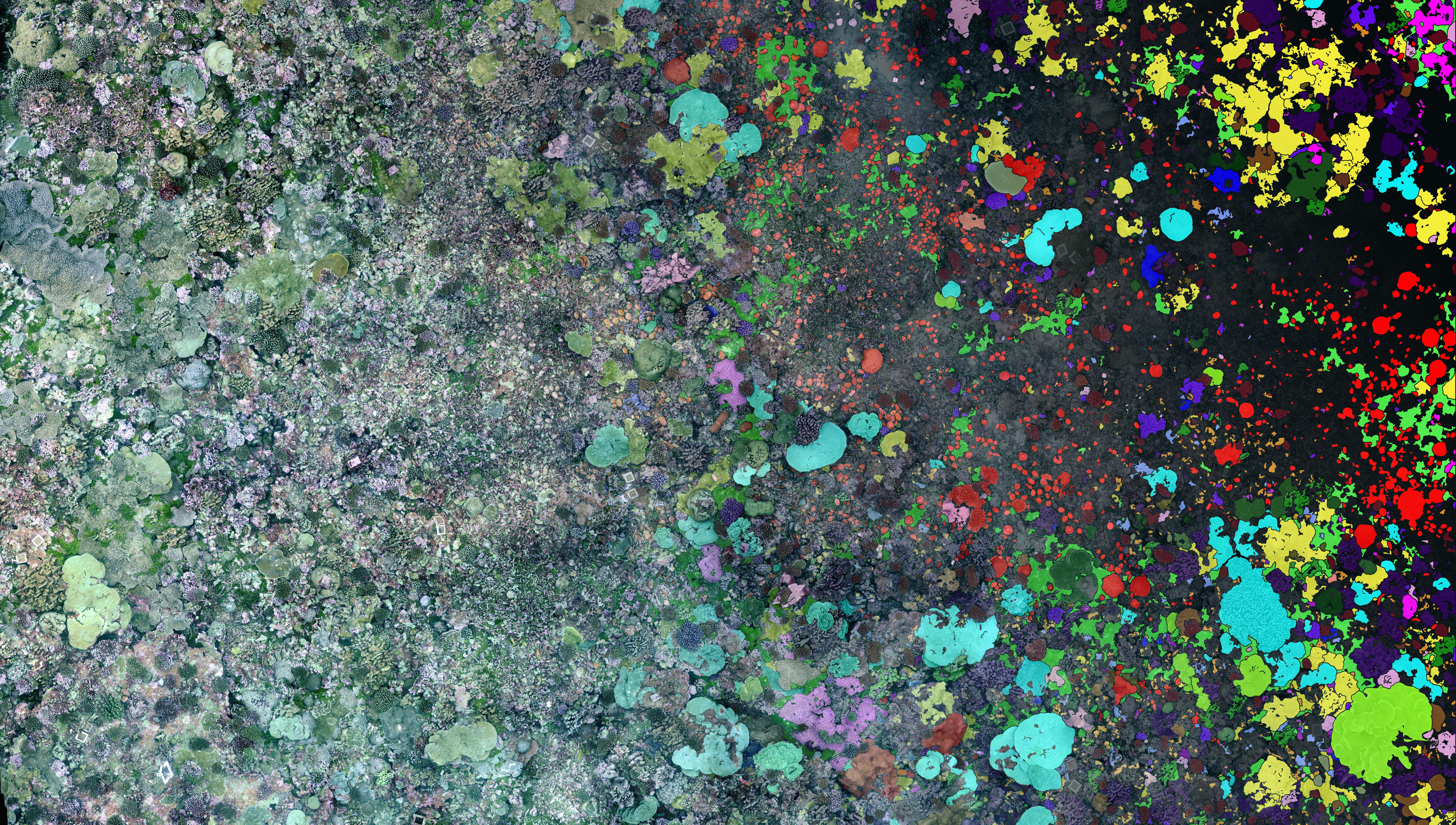
As long as researchers have been diving they have been looking for clues to make sense of what emeritus Scripps Institution of Oceanography professor Jeremy Jackson once called the “ecological anarchy” of the coral reef. Guided by two decades of observations from the remote central Pacific to some of the best-studied areas of the Caribbean, we sought to find pattern in the chaos. The 100 Island Challenge is excited to share our article out today in the journal Coral Reefs, “Large-area imaging reveals biologically driven non-random spatial patterns of corals at a remote reef.”
Corals possess a unique colonial biology which provides them with a wide array of growth and reproductive strategies. We found that corals tend to be clustered together across the reef landscape and that the strength of this clustering is tightly linked to the specific growth and reproductive strategy that a given coral uses. We are particularly excited to emphasize how the unique biology of corals results in the patterns visible on the reef landscape. This is our first publication from the large-area imaging work at the core of the 100 Island Challenge and represents an important step in our understanding of coral demographics and large-scale patterns. Moving forward, we hope to build on this work to understand how coral life history strategies and other factors shape disturbance response, and ultimately how to use this information to best manage the world’s coral reefs. Despite mounting concern regarding the future of coral reefs, we feel there are still fundamental insights to be uncovered and hopeful solutions to be designed. Please feel free to visit our website for more information or contact the authors directly (Clinton Edwards, clint@ucsd.edu; Yoan Eynaud, yeynaud).
The paper can be found at the publishers website here: https://link.springer.com/article/10.1007%2Fs00338-017-1624-3

